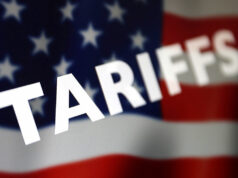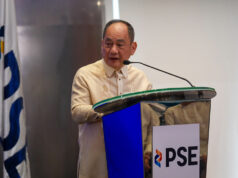BSP: Inflation could slow to below 2% this quarter

INFLATION could settle below the official full-year target this quarter as food and oil prices ease, BSP Governor Benjamin E. Diokno told reporters on Tuesday, citing “base effects” due to multi-year-high rates last year.
“Third quarter na tayo, so baka below two pa nga ‘yan because of the base effects (We’re in the third quarter, so it might settle below two percent because of the base effects),” Mr. Diokno said at sidelines of a forum, also citing a “significant” drop in oil prices as well as the cost of rice.
The central bank reported that inflation settled at the midpoint of its 2-4% target band in the second quarter at three percent, coming from the 3.8% recorded in January-March, helped by improved domestic food supply conditions.
BSP Deputy Governor Francisco G. Dakila, Jr. had said in a briefing last Friday that “rice prices declined with the ongoing harvest season and the continued arrival of imports.”
President Rodrigo R. Duterte signed on Feb. 14 the law that liberalized rice importation by removing the National Food Authority’s import function and replaced quantitative restrictions on the staple with tariffs: five percent for rice from within the Association of Southeast Asian Nations (ASEAN); 40% for imports within the 350,000 metric-ton minimum access volume (MAV), regardless of country; and 180% for above-MAV imports from non-ASEAN countries.
“Unless magkaroon ng (there is) severe El Niño, I don’t think magi-increase ‘yung (there will be an increase in the) price of food,” Mr. Diokno said yesterday.
Central bank officials on Friday said it expects inflation to “decelerate close to the low end of the target range” this quarter before settling close to the midpoint of the target over the medium term.
Dennis D. Lapid, BSP Monetary Policy Sub-Sector officer-in-charge, downplayed the effects of the “mild” dry spell on food supply, saying the disturbance will not pose a “huge” risk. “It (El Niño) might be a little better now because we’ve liberalized the trade regime for rice. So you’ll now see response from the private sector if there will be a shortage in domestic supply,” Mr. Lapid had said on Friday.
In its June 20 monetary policy meeting, the central bank revised its inflation forecast for this year to 2.7% from the 2.9% penciled in May and to three percent from 3.1% for 2020, on expectations of lower global oil prices and the peso’s appreciation.
Also on Tuesday, Mr. Diokno said the BSP awaits second-quarter gross domestic product (GDP) growth data to be reported in the morning of Aug. 8, hours before monetary authorities conduct their fifth policy review for this year. “We are going to look at the second-quarter GDP and look at the sources of growth… such as strong investment growth,” he said. “Consumption is a given but we want it to be investment led.”
The central bank chief has estimated that the economy grew by “at least six percent” in the second quarter on the back of improved government spending after President Rodrigo R. Duterte signed into law the P3.662-trillion 2019 national budget and household consumption fueled by slowing inflation. If realized, this estimate will be faster than the 5.6% growth posted in January-March that was the economy’s worst quarterly performance in four years.
The government said the economy will need to expand by an average of 6.1% over the next three quarters to reach the floor of the full-year growth target of 6-7%.
The Development Budget Coordination Committee has maintained its gross domestic growth target at 6-7% for this year, 6.5-7.5% in 2020 and 7-8% in 2021 and 2022. — Karl Angelo N. Vidal



